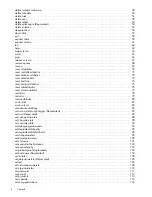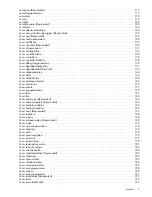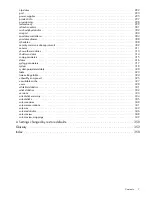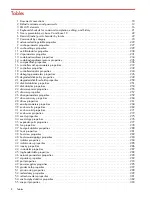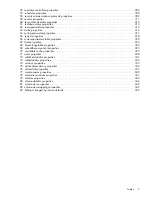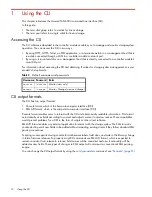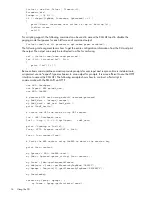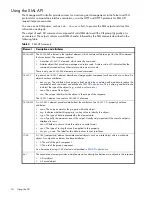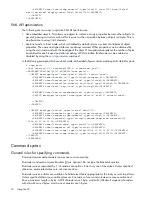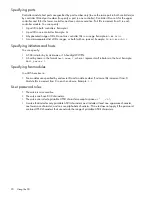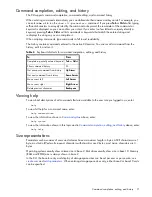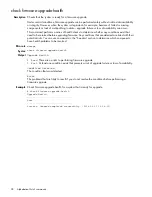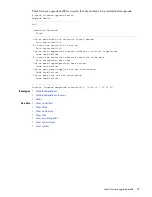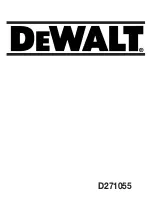
18
Using the CLI
<PROPERTY name="time-stamp-numeric" type="uint32" size="25" draw="false"
sort="datetime" display-name="Time">1405001789</PROPERTY>
</OBJECT>
</RESPONSE>
XML API optimization
The following are two ways to optimize XML API performance:
•
Use embedded objects. This allows one object to contain not only properties but also other objects. In
general, parsing a structure such as this is easier as the association between objects is simpler. This is
an alternative to using
COMP
elements.
•
Use brief mode. In brief mode, which is disabled by default, returns a subset of attributes of object
properties. The name and type attributes are always returned. Other properties can be obtained by
using the
command with the basetype of the object. This optimization reduces the number of bytes
transmitted for each request and allows caching of CLI metadata. Brief mode can be enabled or
disabled by using the
command.
In the following example, which uses brief mode, embedded objects contain media-specific detail for ports:
# show ports
<?xml version="1.0" encoding="UTF-8" standalone="yes"?>
<RESPONSE VERSION="L100" REQUEST="show ports">
<OBJECT basetype="port" name="ports" oid="1" format="rows">
<PROPERTY name="durable-id" type="string">hostport_A0</PROPERTY>
<PROPERTY name="controller" key="true" type="string">A</PROPERTY>
<PROPERTY name="controller-numeric" key="true" type="string">1</PROPERTY>
<PROPERTY name="port" key="true" type="string">A0</PROPERTY>
...
<PROPERTY name="health-recommendation" type="string"></PROPERTY>
<OBJECT basetype="sas-port" name="port-details" oid="2" format="rows">
...
</OBJECT>
</OBJECT>
...
<OBJECT basetype="status" name="status" oid="17">
<PROPERTY name="response-type" type="string">Success</PROPERTY>
<PROPERTY name="response-type-numeric" type="string">0</PROPERTY>
<PROPERTY name="response" type="string">Command completed successfully.
(2014-07-10 14:23:23)</PROPERTY>
<PROPERTY name="return-code" type="sint32">0</PROPERTY>
<PROPERTY name="component-id" type="string"></PROPERTY>
<PROPERTY name="time-stamp" type="string">2014-07-10 14:23:23</PROPERTY>
<PROPERTY name="time-stamp-numeric" type="string">1405002203</PROPERTY>
</OBJECT>
</RESPONSE>
Command syntax
General rules for specifying commands
Command names and parameter names are not case sensitive.
Parameters enclosed in square brackets ([]) are optional. Do not type the bracket characters.
Parameter values separated by ’|’ characters are options. Enter only one of the values. Unless specified
otherwise, enumerated values are not case sensitive.
Parameter values in italics are variables. Substitute text that is appropriate for the task you want to perform.
Unless specified otherwise, variable values such as names of users and volumes are case sensitive and
have a maximum length in bytes. ASCII characters are 1 byte; most Latin (Western European) characters
with diacritics are 2 bytes; most Asian characters are 3 bytes.
Summary of Contents for AssuredSAN 6004
Page 11: ...Document conventions and symbols 11 TIP Provides helpful hints and shortcuts...
Page 114: ...114 Alphabetical list of commands See also set cli parameters show protocols...
Page 139: ...show controller statistics 139 See also reset all statistics reset controller statistics...
Page 162: ...162 Alphabetical list of commands See also show power supplies...

